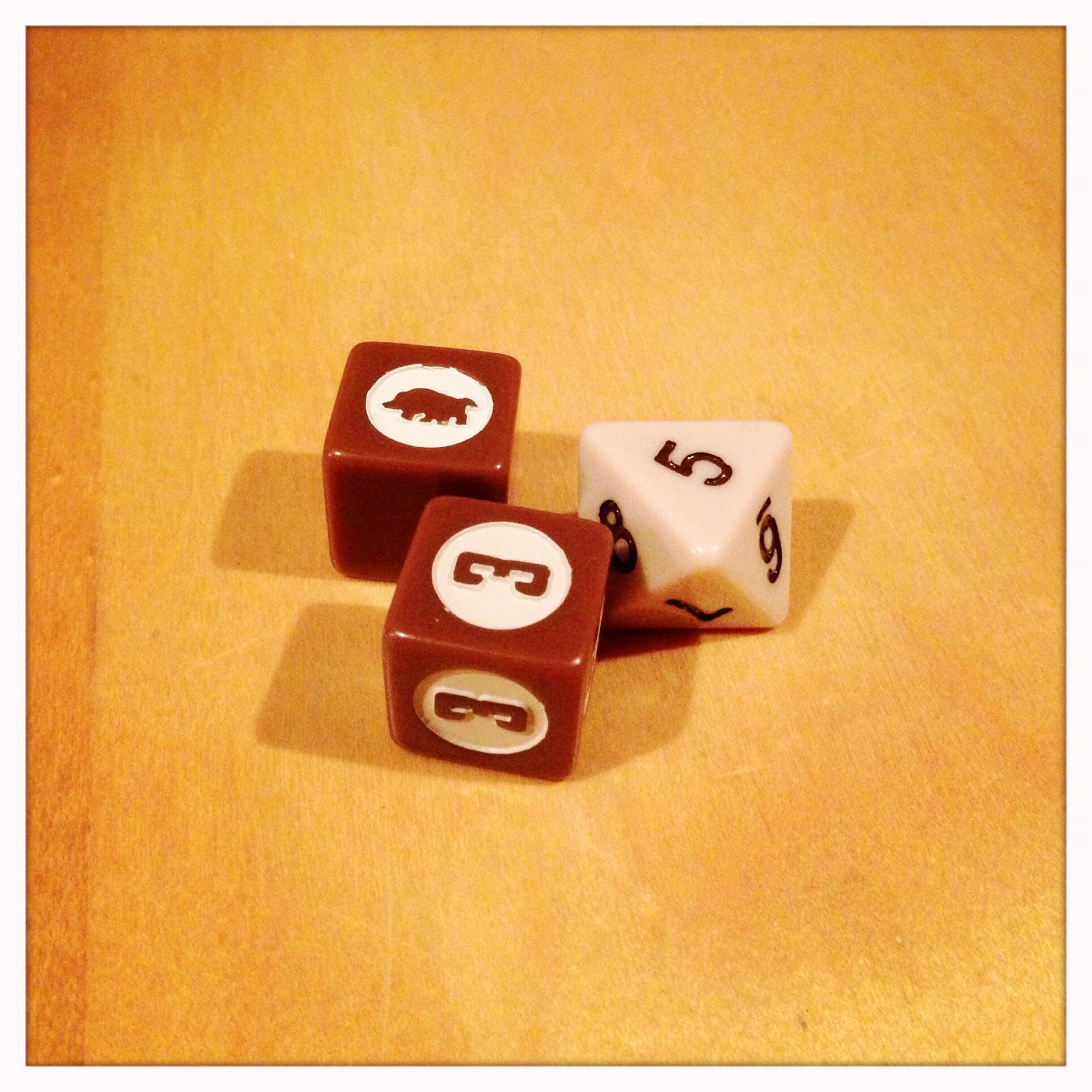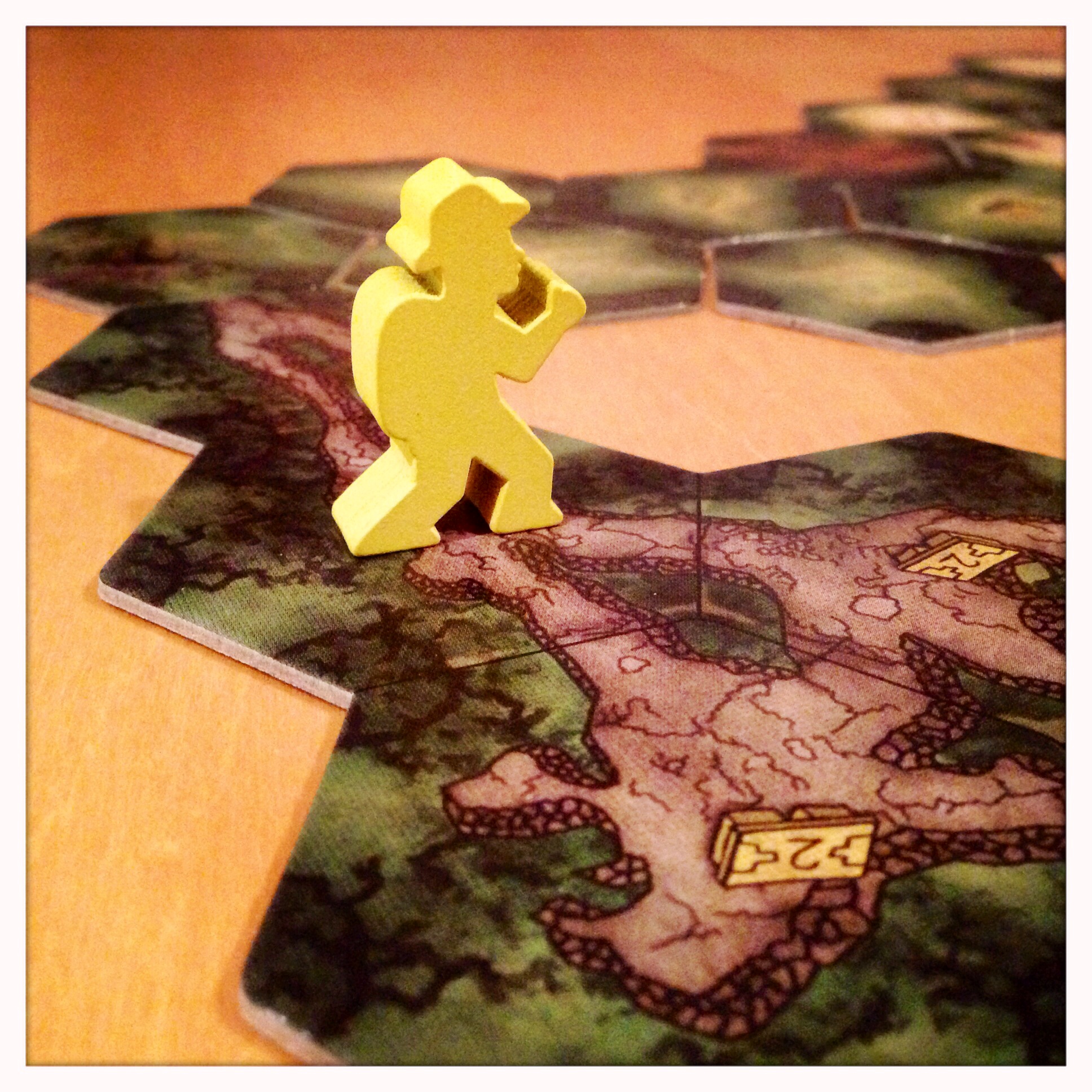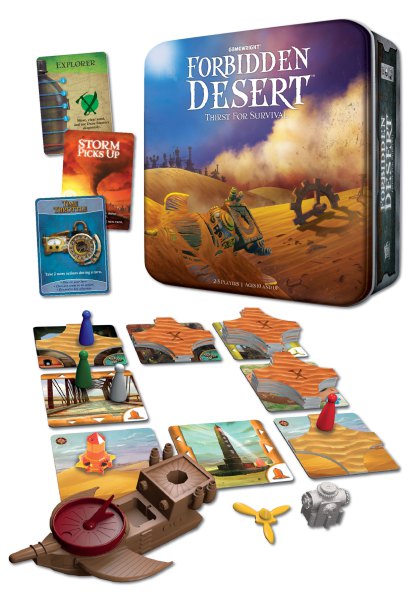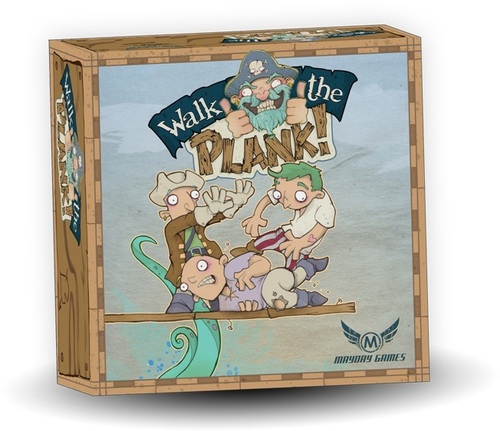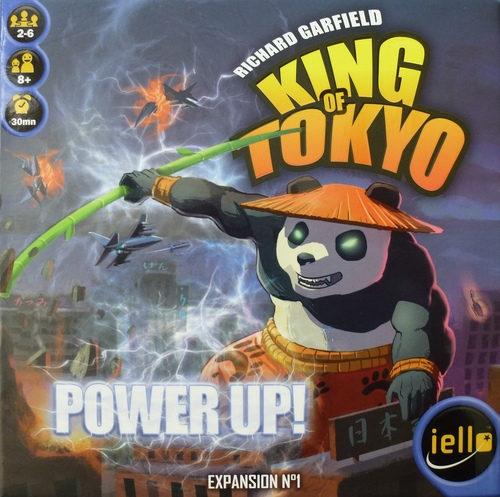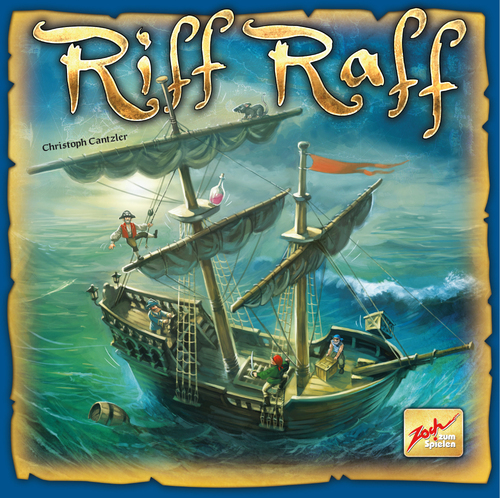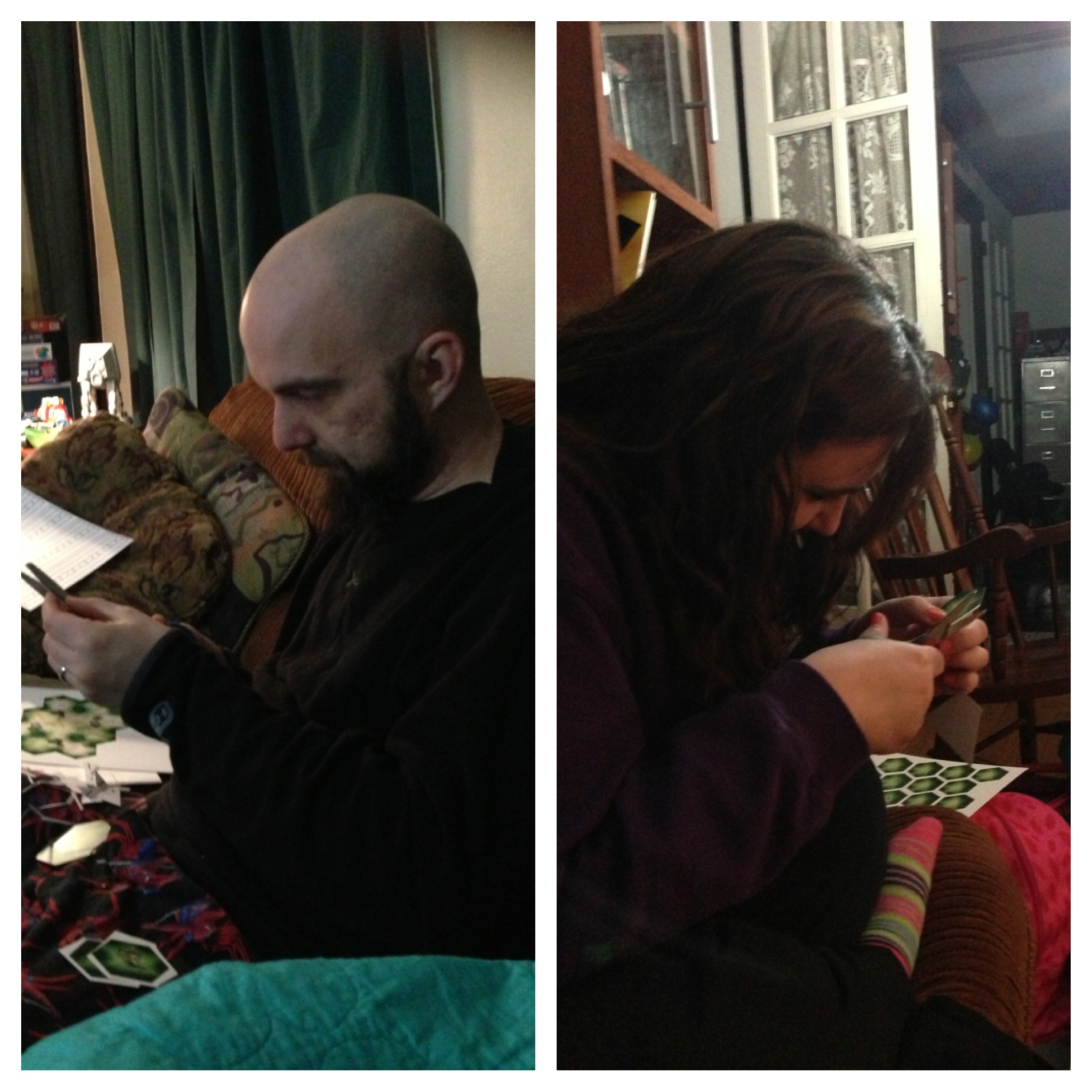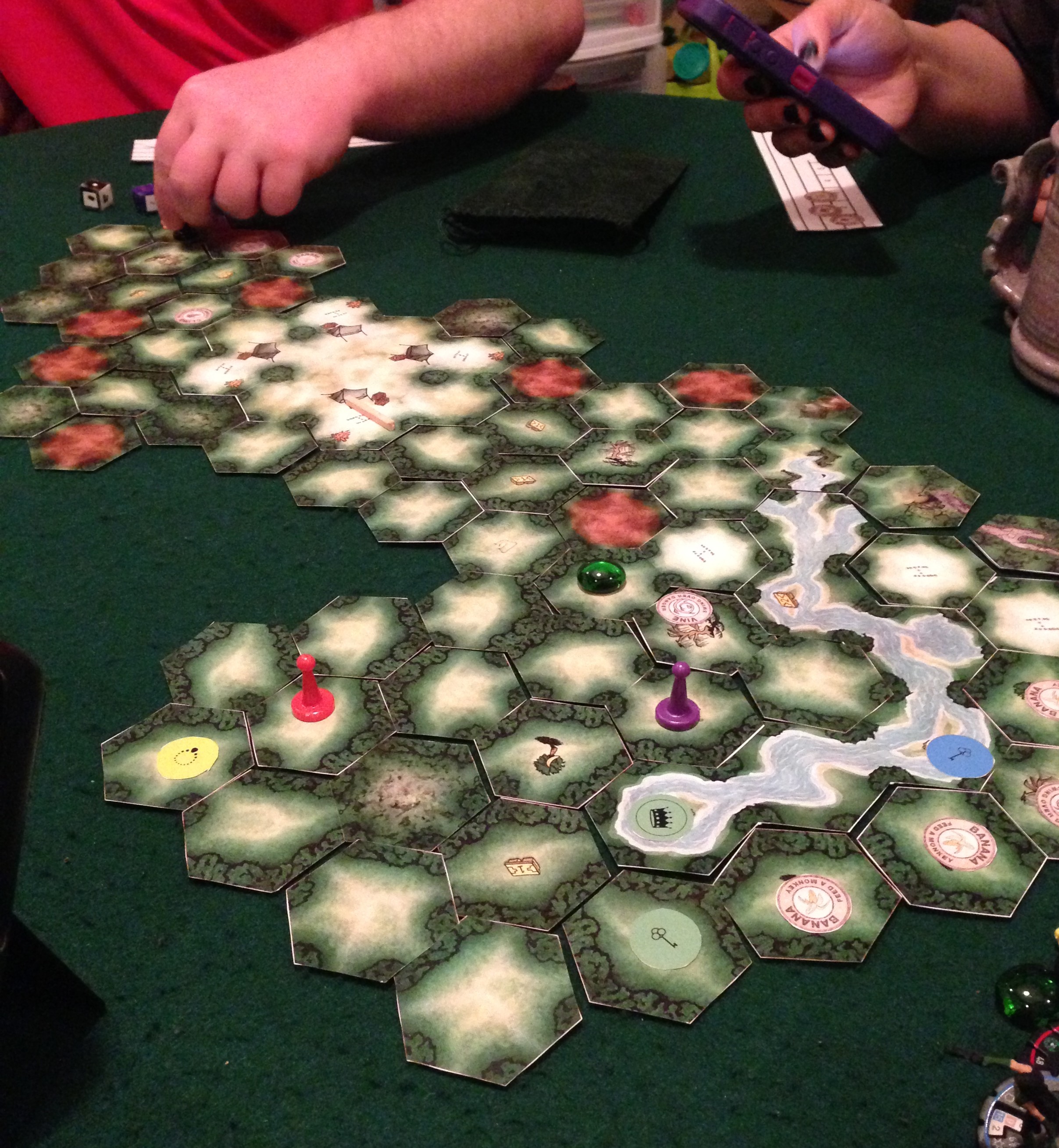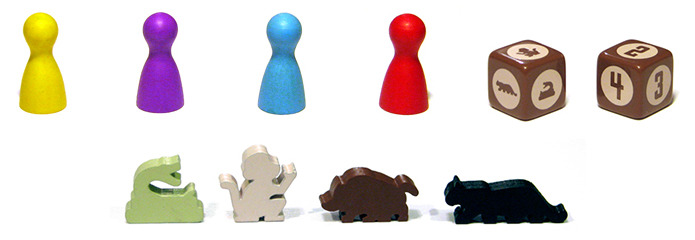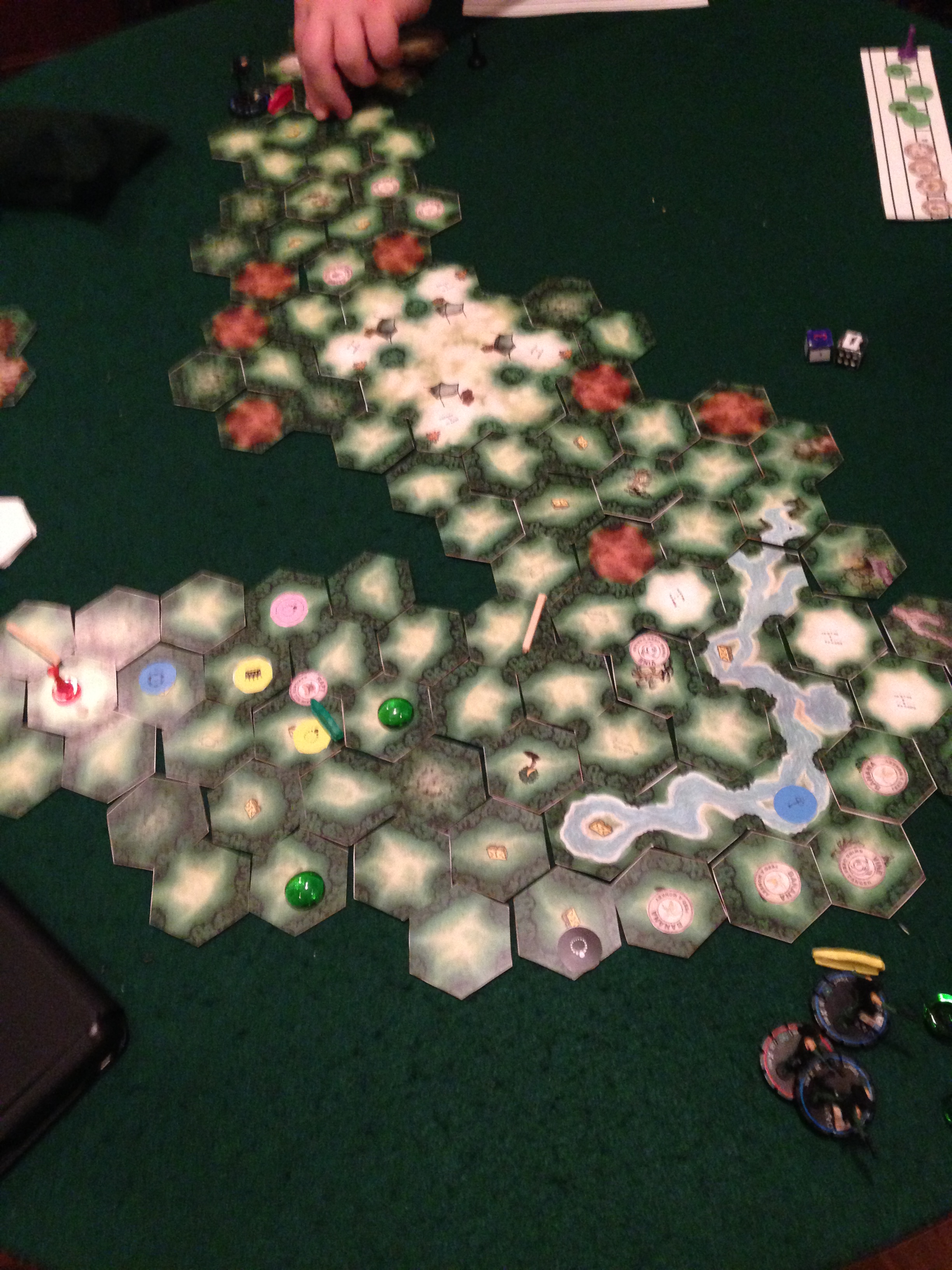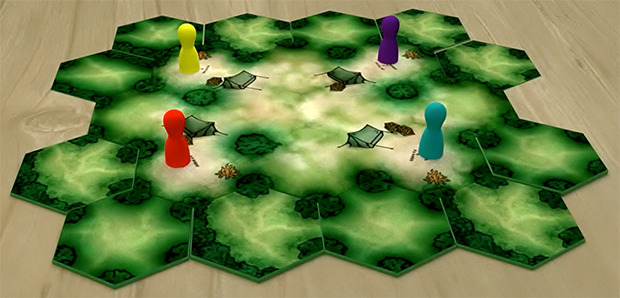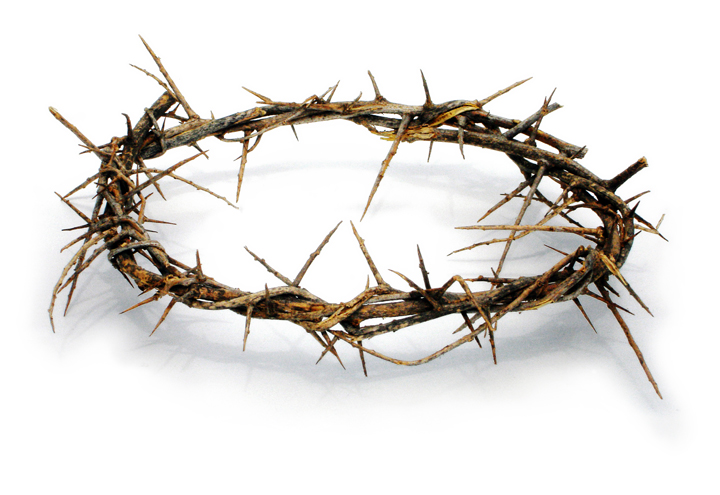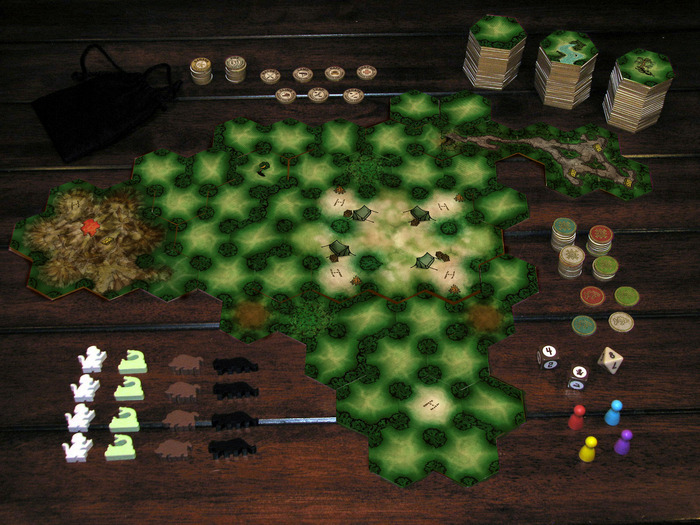Relic Expedition—A Double-Take Review
/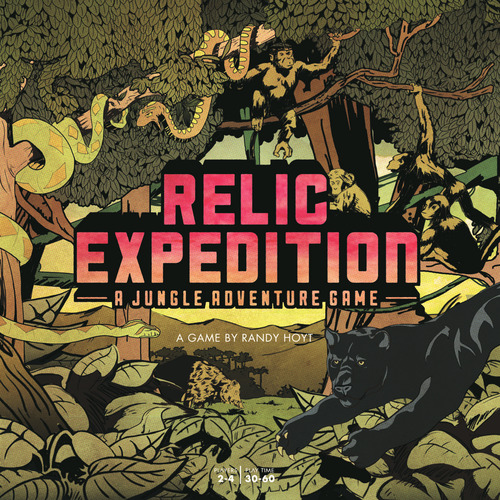 September 13, 1997--I brought the machete down again and again today--cutting a swath through the dense jungle. It's been days since we've seen anything besides this oppressive jungle and more bugs than I thought existed in the entirety of the world. As the son was setting, we did run across a pair of giant paw-prints. I pray we don't meet their owner...
It's been a few years since an exploration game broke any new ground. But newcomers Foxtrot Games are hoping to change that with their first game: Relic Expedition. So how is it? Let's see...
September 13, 1997--I brought the machete down again and again today--cutting a swath through the dense jungle. It's been days since we've seen anything besides this oppressive jungle and more bugs than I thought existed in the entirety of the world. As the son was setting, we did run across a pair of giant paw-prints. I pray we don't meet their owner...
It's been a few years since an exploration game broke any new ground. But newcomers Foxtrot Games are hoping to change that with their first game: Relic Expedition. So how is it? Let's see...
The Overview
You're an explorer, making your way through a jungle in search of treasure. But there are dangers lurking around every corner. Well...jungles don't have corners, but you get the idea. The first player to collect four matching Relics, move to a helicopter clearing, and use three Action Points, wins the game.
- 4 Wood backpack racks
- 4 Explorers
- 3 dice
- 4 large tile boards (Basecamp, Mountain, Cave, River)
- 16 Wood animal figures
- 36 Triangle curse markers
- 50 Draw supply tiles
- 1 Cloth bag
- 20 Board supply tiles
- 36 Relic tiles
- 16 Starting jungle tiles
- 96 Regular jungle tiles
- Place the starting tile in the center, and then each player puts his explorer on one of the camp spaces and grabs the Backpack rack in his color.
- Randomly place one of the starting Jungle tiles onto any empty space adjacent to an Explorer. Any unused starting tiles are removed from the game.
- Place the regular Jungle tiles, Animal figures, Board Supplies (with the green faces), Curse marker, and feature tiles next to the board.
- Place the Draw Supplies into the bag.
- Place Relics facedown onto the Relic Table spaces on the feature boards--the Mountain has 4, the River 6, and the Cave 6. Place the remaining Relics facedown in a pile next to the board.
On your turn, you'll roll the two dice--the animal one and the number one. If an animal is rolled, and one of those animals is on the board, it moves. Starting with the person who rolled, he will choose one of those animals and move it one or two spaces. If there are any other of that type of animal, then the next player clockwise will choose one of those unmoved animals and move it. This continues until each animal has moved. There are some specific rules on where and how an animal can be moved, but those aren't important for the review.
If an animal moves to a space with an explorer, an encounter happens. What that looks like will depend on the animal. Snakes will cause that explorer to lose a turn, but a player can trash a first aid kit supply token to avoid it. Boars cause you to lose a turn and become "knocked unconscious"--which means all of the things in your backpack are placed on the space, and can be stolen by other players until you pick them up on your next turn. This can be avoided by playing a trap or tranquilizer supply token. Panthers wreck you even worse, and cause you to lose your stuff and be MedEvacced out. You can enter on a helicopter clearing of your choice, and hopefully make your way back to where your stuff is. Again, tranqs and traps can help with this. Monkeys will take a random item from your bag; hopefully it's not a Relic. They can be bribed with bananas.
The number die will give you a result of either 2, 3, or 4, and that's the number of actions you can take. As you move through the jungle you'll reveal new tiles, and sometimes animals or Relics or new features will be revealed. There are rules that govern what can and can't be traversed, and how many action points it costs, but, again, it's not important for the review. Just know you'll be moving around, trying to avoid animals and trying to get Relics. There are three special features that have loads of relics on them. The Mountain, Cave, and River features are all triggered when you find certain tiles. The feature is now moved to the board, and the Relics on them are open season. But each feature also takes a special supply token to traverse. So a Raft to get on the river, and a Headlamp for the cave. It's evocative and interesting.
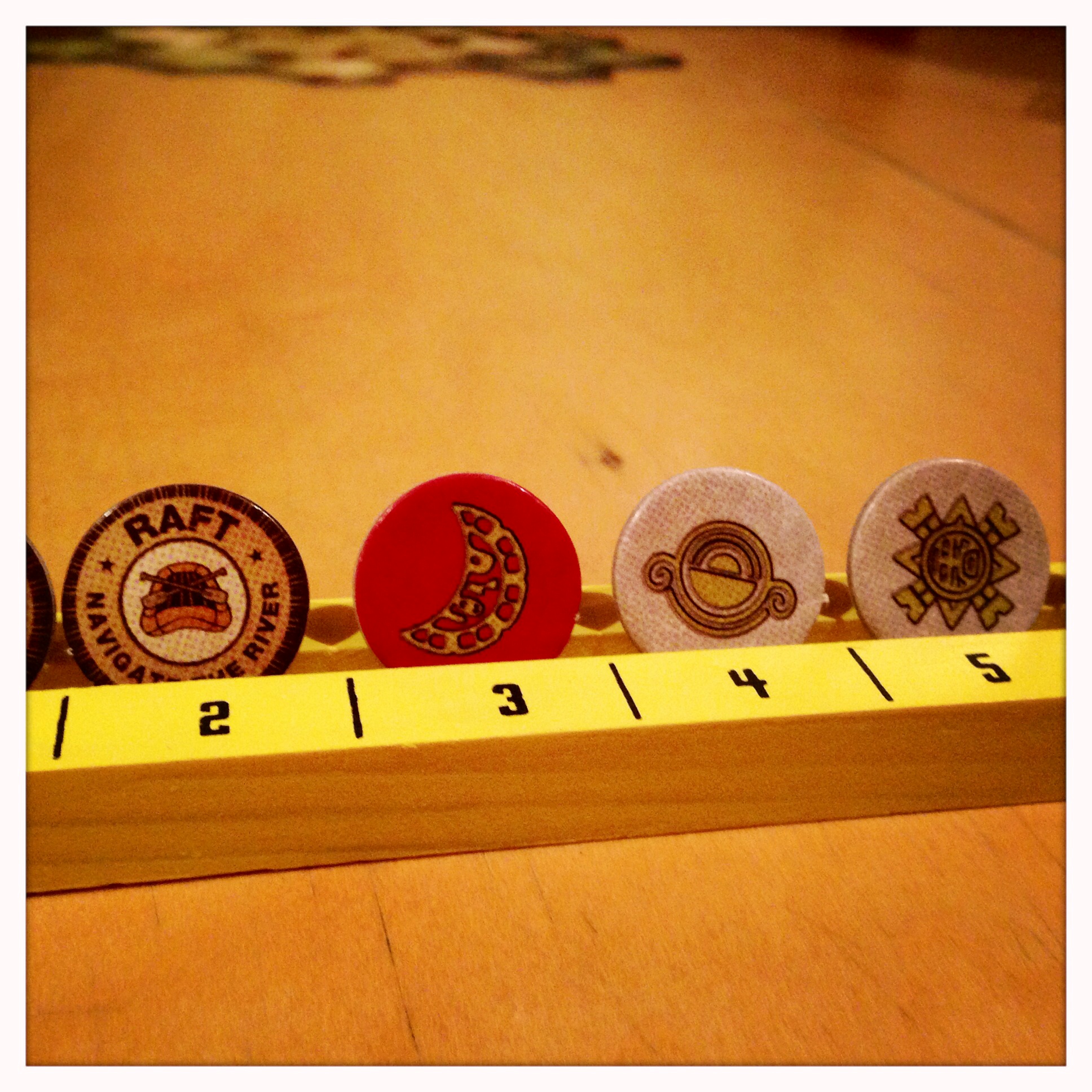 The Relics have six different insignias and six different colors. Someone has to have four matching Relics--either the same color or the same insignia, make it to one of the boards helicopter landing spots, and spend three action points. Each backpack only holds eight items, so this makes for some interesting decisions, as the closer you get to winning, the fewer handy tools you can carry in your backpack. So you might be winning, but you're also vulnerable.
The Relics have six different insignias and six different colors. Someone has to have four matching Relics--either the same color or the same insignia, make it to one of the boards helicopter landing spots, and spend three action points. Each backpack only holds eight items, so this makes for some interesting decisions, as the closer you get to winning, the fewer handy tools you can carry in your backpack. So you might be winning, but you're also vulnerable.
The winner flies off into the sunset, leaving the others as Panther Chow...
The Verdict
Firestone--I really did like this game, but the fact that your actions each turn are determined by a die roll just kills this for any kind of serious play. That simply means it's a family game, and that's okay.
Jeremiah--Yeah, that die roll is a head scratcher for me too, but definitely not a killer. Our family and my gaming friends enjoyed it. If the die is that big of a killer I think playing with a house rule of a set amount if actions is a suitable option.
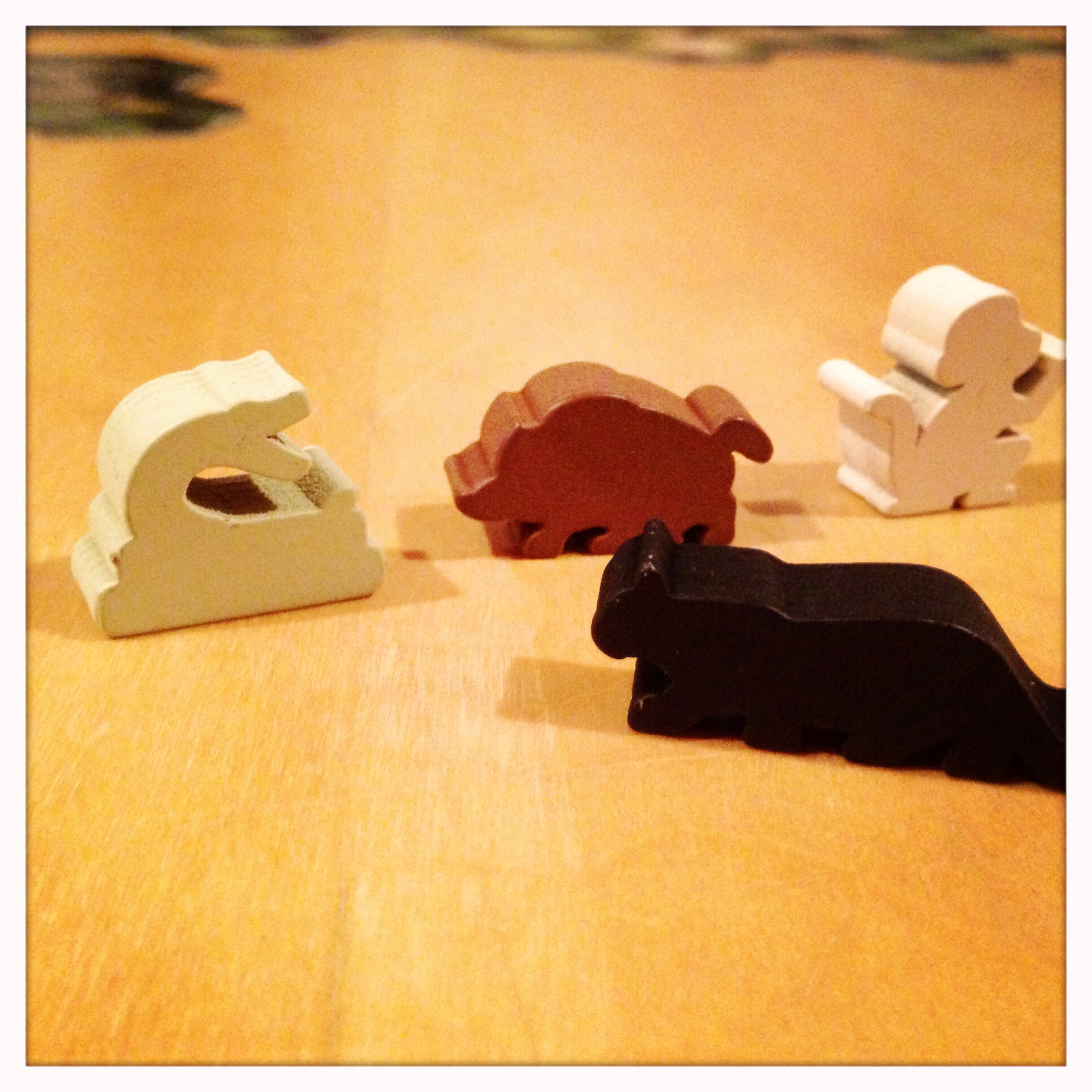 Firestone--The exploration aspect of this was great. In a game such as Tikal, the jungle is still constrained by the board, so the "exploration" aspect is mostly muted. I think one of the reasons Carcassonne works so well is that it can go anywhere and everywhere, so you're never sure what the board will look like. Similarly, the jungle we revealed in Relic Expedition was different every game. And the special features like the cave and the river add even more interesting exploration options. It just works.
Firestone--The exploration aspect of this was great. In a game such as Tikal, the jungle is still constrained by the board, so the "exploration" aspect is mostly muted. I think one of the reasons Carcassonne works so well is that it can go anywhere and everywhere, so you're never sure what the board will look like. Similarly, the jungle we revealed in Relic Expedition was different every game. And the special features like the cave and the river add even more interesting exploration options. It just works.
Jeremiah--Couldn't agree more, the feature pieces are a nice variation from just placing hexes. But the art design and the way the jungle is revealed as you explore it is awesome! Every time we play the jungle looks unique and picturesque!
Jeremiah--MEEPLES, MEEPLES, MEEPLES! Monkeys, snakes, jaguars, boars, Indiana Jones-looking adventure meeples! They're all awesome. Everything about this game's bit and boards is super well done!
Firestone--Yeah, that's all top-notch. Those animeeples are great, and way better than just using tokens. The board tiles are all nice and thick, and the artwork is great. And I really like the art and aesthetic of the supply tiles; those just grabbed me for some reason.
Jeremiah--My only complaint is the rule book; it's a small book, designed to look like a pocket field guide. I get it: The form is awesome, but the function isn't so much. The learning curve isn't that strong on this one, so you don't have to grab the rule book too often after your first play or so, but the rule book made it a little tough for quick-referencing certain scenarios. Again the form is awesome and it fits the theme perfectly. But the function leaves a little to be desired.
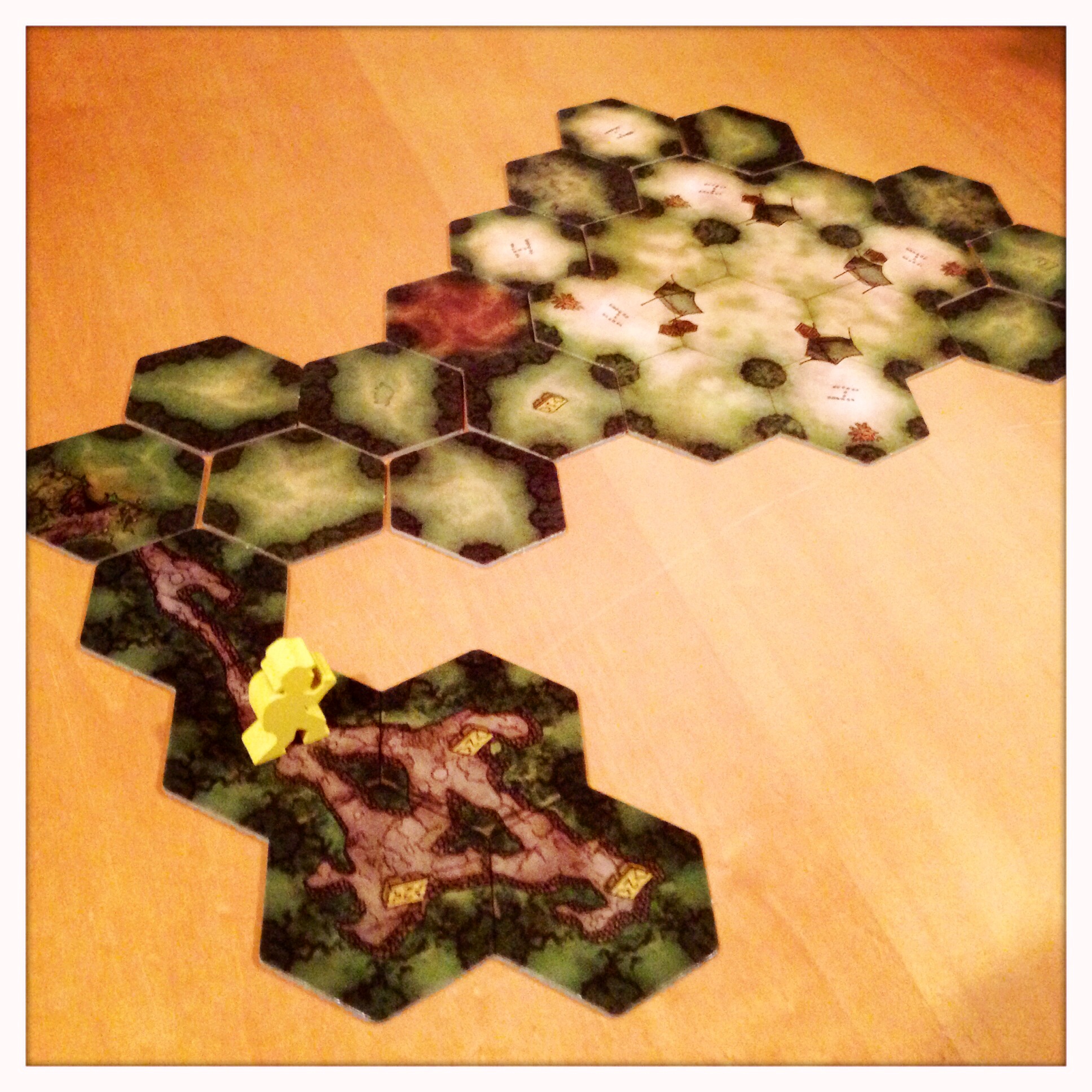 Firestone-- Making it a Field Guide was clever and evocative--and I didn't even mind that it was small. It has color pictures, and line drawings of the animals, like you would find in an old scientific journal. That's cool! If it had been organized better, and had everything I needed, I wouldn't have complained at all.
Firestone-- Making it a Field Guide was clever and evocative--and I didn't even mind that it was small. It has color pictures, and line drawings of the animals, like you would find in an old scientific journal. That's cool! If it had been organized better, and had everything I needed, I wouldn't have complained at all.
As it is, there are a few times where the Field Guide says, "See the Quick Start Guide for details." Well...no. A quick-start guide should never have the details. It's a quick-start guide. The rules should have everything, and the quick-start guide should be for starting...quickly. It should gloss over rules. That, and the fact that rules weren't found where you expected them to be made it a little slow to get started. It's not overly complicated, and after a couple of games you probably won't need the rules at all, but for the first couple, it's kinda rough.
Jeremiah--While I agree that the dice roll to determine the number of actions a player gets each turn is maybe a little to far down the random trail, using the die to determine which animals--if any--move/attack that turn is spot on and the way it plays out is seamless and balanced.
Jeremiah Final Verdict--We've certainly seen our share of Kickstarter games that have come to market with questionable gameplay, component quality, and everything from minor to major design flaws. But Relic Expedition is one of the best Kickstarter games we've seen! The game is fun to play, has massive replay value, is gorgeous to look at, and appeals to everyone from kids, to families, to casual players, and maaaybe even some serious gamers. We didn't do a list of top Kickstarter game's but if we did, Relic Expedition would be a top 5 game on that list, no doubt. So with that I say, emphatically, put this game on your table!
Firestone Final Verdict--I've been thoroughly impressed with Foxtrot's first game. They stumbled a bit on the rules, and I can't get on board with the action die, but this is a great, great family game. It can be hard to truly capture the feeling of exploration, but Relic does that really well. As the board opens up, you realize how well done the game is, and how thought-out the decisions are. Combine that with cool animeeples, great artwork, and a little luck, and you've got a game that deserves to be on your table.
We'd like to thank Foxtrot Games for providing review copies of Relic Expedition. This in no way affected our opinions on the game.
Thanks for reading!


